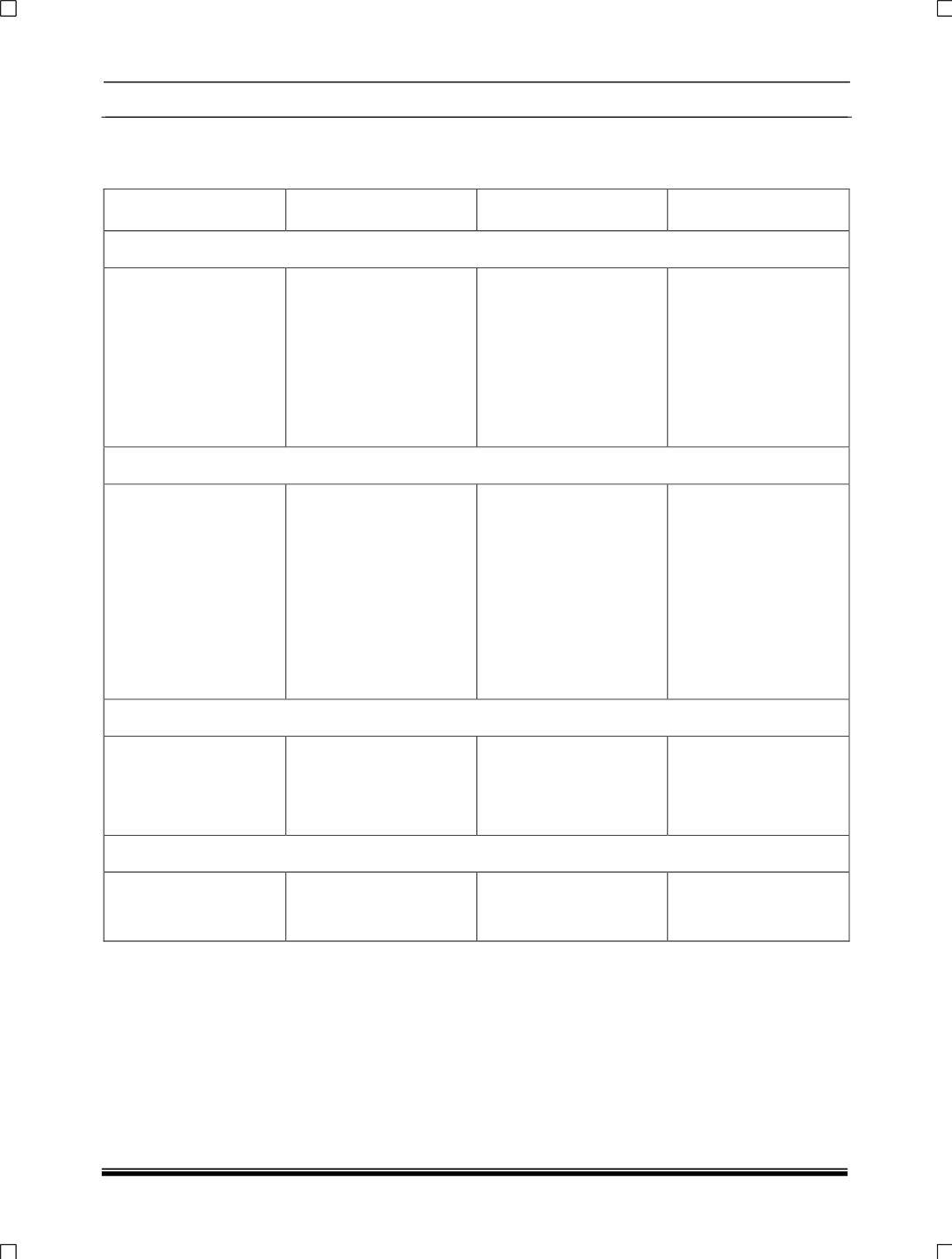

DRIVETRAIN-TA65 Star
14
4.4. DIAGNOSIS
4.4. A. DIAGNOSIS OF CLUTCH:
IN THE VEHICLE
THE COMPONENT
CAUSES
REMEDY
1. New Clutch: Difficulty in changing gear
Difficulty in changing
gear,
following
replacement of clutch
shaft.
Burrs thrown up around
splines causing stiff
movement on shaft.
Due to poor alignment of
the
gearbox
on
reassembly.
The driven plate was
improperly aligned.
Aggressive location of
shaft into hub.
Care with the centering
of driven plate; use an
appropriate
clutch
aligning tool.
Do not force the
gearbox but rotate the
flywheel or gearbox
shaft to line up input
with splines.
2. Loss of Drive: With recently fitted clutch
Loss of drive and loud
clatter, only covered a
few hundred kilometers.
The centre hub of the
driven plate has ripped
out and possibly one or
more of the springs have
been pushed out.
The weight of the
gearbox has been hung
on the centre plate. This
has distorted the driven
plate resulting in failure
within a short period of
use.
Very aggressive clutch
control .i.e. “Racing
starts” or when towing a
heavily laden trailer.
Ensure
that
the
gearbox shaft and
gearbox are not hung
on the clutch driver
plate by using a pit jack
or trolley jack to support
the
gearbox
on
reassembly.
3. Slipping Clutch
Clutch slip. The control
system is in good
condition and correctly
adjusted.
The
clutch
friction
material is contaminated
with oil.
There is an oil leak from
the engine or gearbox.
Carefully check the
engine and gearbox oil
seals. Replace seals if
oil is present in bell
housing.
4. Juddering During Pulling Away
Clutch judder on initial
take up of torque.
Oil or grease found on
the middle of clutch to
driven plate.
Excess grease applied
on input shaft splines.
Only use the correct
amount and correct
type of grease.










